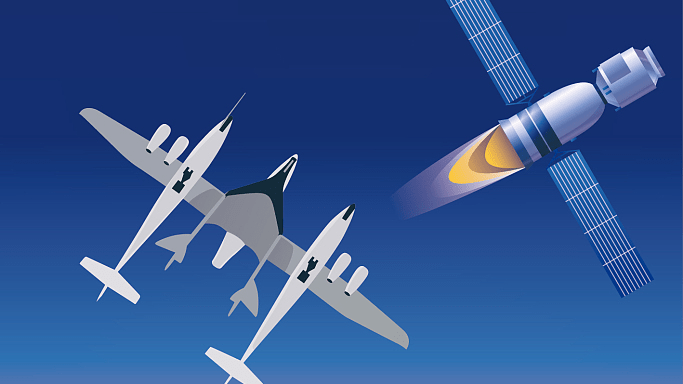One of the more famous features of Space Age 2.0 is the rise of the commercial space industry, also known as “NewSpace.” While the space agencies of the world plan to send astronauts back to the Moon (this time, to stay), crewed missions to Mars, and robotic missions to every corner of the Solar System, NewSpace companies are offering cost-effective launch services, sending commercial astronauts to space, and commercializing Low Earth Orbit (LEO). There’s also the prospect of space tourism, with companies like Virgin Galactic, Blue Origin, and SpaceX offering suborbital flights, trips to LEO, and beyond!
China, one of the fastest-growing nations in space, is looking to offer commercial flights to suborbital space. According to senior rocket scientists Yang Yiqiang, who spoke to the state-run China Global Television Network (CGTN), China will send its first group of commercial passengers on a spaceflight, with ticket prices ranging between $287,200 to $430,800 (2 to 3 million yuan). While China is a relative newcomer to the commercial space scene, this announcement signals its intent to catch up to companies based in the U.S. and other space competitors.

Yang Yiqiang was the general director of the Long March 11 rocket project and the founder of Beijing-based rocket company CAS Space (founded in 2018). As Yang explained, there are currently three modes of spacelight:
- The International Space Station (ISS): This consists of launch vehicles sending spacecraft to rendezvous with the ISS. This sets strict requirements on the physical and psychological conditions of the tourists.
- Lift and Release: This consists of a cargo aircraft lifting another spacecraft to release altitude and the spacecraft flying to suborbital altitude. Virgin Galactic offers this mode with its White Knight Two aircraft (and other “motherships”) and VSS Unity and Imagine spacecraft.
- Rocket Flights: This consists of launch vehicles sending capsules to suborbital altitudes. This is the mode Blue Origin is dedicated to using its New Shephard reusable launch vehicle.
According to Yang, this third mode will be most suitable for commercial passengers and the one that China will focus on. Based on the illustrations featured by CGTN, this will probably involve using the Long March 3C (CZ-3C) to launch a Shenzou spacecraft (and/or a converted Tianzhou automated cargo spacecraft) with a crew of three. China’s next-generation crewed spacecraft (a reusable vehicle intended to replace the Shenzou) can accommodate up to seven passengers and is likely to be used for tourism ventures.
The Chinese commercial space sector is still a few decades behind the curve established by its U.S. counterpart, which emerged in the 1980s but has only matured since the turn of the century. However, China has experienced significant growth in the past seven years due to increased investment, competition, and technological innovation. According to an industry report, China had more than 370 enterprises focused on satellite manufacturing, rocket launches, and related services.
Until now, said Yang, China’s commercial sector was in the “1.0 era” characterized by basic manufacturing, research, and development. But with these new steps underway, China has entered the “2.0 era,” driven by applications and market forces. At their current rate of progress, Yang claims they will reach parity with the U.S. within ten years. “The key for the development of China’s commercial space sector is application rather than rockets or satellites,” he said. “We need to ensure that common people have access to the sector.”

The Chinese government has also signaled its interest in becoming part of the growing satellite market and commercialization of LEO with the passage of landmark legislation. This includes the passage of the No. 60 State Council Document in 2014 that opened China’s “civil aviation infrastructure” to capital investment. The 14th Five-Year Plan (2021-2025), officially endorsed in March 2021, also established numerous priorities for achieving development goals they hope to reach by 2035. Among them, the plan called for China to:
“Accelerate the disposition of satellite telecommunications networks and other such novel networks aimed at global coverage, implement the major Beidou industrialization projects, and build application demonstrations and open laboratories. Accelerate the commercial application and integrated innovation of the Beidou system, satellite telecommunications networks, surface and low-altitude sensing, and other such space network infrastructure.”
The price point cited by CGTN is clearly meant to be competitive with U.S.-based launch services. On February 16th, Virgin Galactic began taking reservations for the first 1,000 customers, with tickets going for $450,000 apiece (and customers must put down a $150,000 deposit to hold their spot). Based on the Space Foundation’s Space Report 2022 Q2, the commercial space sector grew to $469 billion in 2021. This represented an 11% increase from 2020 ($424 billion) and a 70% increase since 2010.
On top of that, a recent Citibank report indicates that the industry will reach $1 trillion in annual revenue by 2040, with launch costs dropping 95% to unlock more services from orbit. This growth not only accounts for the burgeoning satellite megaconstellation market but also for passenger flights to space and commercial activities in orbit (private space stations, space hotels, etc.) Clearly, China wants a piece of the action, befitting its emergence as a major power in space!
Further Reading: CGTN
The post Chinese Companies are Planning to Offer Space Tourism Flights by 2025 appeared first on Universe Today.
No comments:
Post a Comment